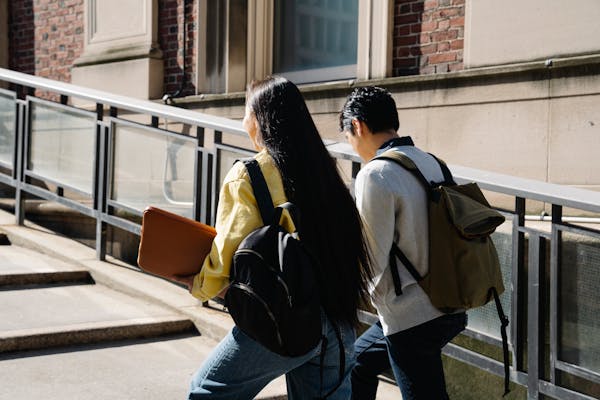
Three Things That Motivate Students to Learn
Aiden Sabater“No significant learning occurs without a significant relationship” -James Comer
Professors are overwhelmed and under pressure as a result of their students’ shifting expectations of them. In an endeavor to find out more about this, I conducted a survey asking students their preferences for professors and educational environments. Although students had varying majors and came from different colleges, they all had similar preferences. The Survey can be summarized to 3 main points.
Making time for interpersonal relations.
Since the pandemic and the move to remote learning, the classroom environment has felt more and more like someone dictating instructions and information and far less like an environment for real passion and education to take place. In the survey, our college participants expressed that it was vital for their professors to set aside time for relational interactions. Relational interactions and meaningful engagement within a classroom are crucial. We asked college students an open-ended question pertaining to the importance of time set aside for in-class communication. The majority of our participants replied that it is moderately to very important for them to be allocated that time.
Students value time set aside for forming connections, whether it be online or in-person. A great way for virtual communication is through a class group chat generated by the professor! A class group chat gives students the opportunity to communicate with one another, build a network, and clarify content pertaining to the class. Students are able to answer each other’s questions without having to constantly turn to the professor. Now that online learning is coming to an end, students need the time within class to communicate with one another.
A professor of mine at San Jose State University utilized AskClass as a way to display open-ended questions to encourage communication. As an introvert, having an open-ended question to direct the conversation resolves anxiety related to awkward small talk while fueling conversation ideas for extroverts. It was simpler to strike up future conversations afterward, while also providing motivation to come to class to talk with new acquaintances.
Reaching out to students shows you care.
Life happens, and since the majority of higher education has been remote for the past two years, students often don’t feel as though the teacher even knows they exist as anything more than a face in a Zoom meeting. When a teacher senses a student is lacking in their academic performance, and reaches out, it makes that student feel cared for by the teacher.¹ . A simple gesture that demonstrates that a professor cares can go a long way in the students’ success. When asking our participants, “What makes a good professor to you?”, we had a variety of answers, but it can be summarized as a professor that cares. They wanted them to care in different ways: to care about them and the class. Of course, students want a professor that is able to teach the subject, but an overwhelming number of our student participants wanted professors that were understanding and caring about their specific situation without condemnation.
Some students also realized that caring is a two-way street. All the caring can not only be done by the professor. Students need to put in as much effort as they would like the professor to have. Students should also put in the effort to do their work accordingly and seek assistance when needed. Professors may not know which student needs the extra help unless students ask for it.
A political science student from San Francisco State University mentioned how a good professor has the ability to tell a student what to do correctly as well as provide constructive criticism, so they can become a better student in the future. A graphic design student at San Jose State University had a similar idea: “A good professor listens and understands their students, gives help when needed, but is strong enough to push back when needed.” It is important for not only professors but students as well to put in the effort to care for each other to get a positive result.
Overcoming the awkward silence before class.
Unsurprisingly, most classes, especially those that are remote, begin with an awkward silence. According to our survey, the vast majority of students prefer a light conversation initiated by the professor. The awkward silence is broken when the professor jumps into the content for the day. Instead of jumping straight into the class material, all it takes is a simple conversation from the professor to break the ice. Shifting the regular awkward silence at the beginning of class into small talk to see how everyone is feeling about the class to come. An overwhelming number of our survey participants felt this way. They felt as though a light conversation, initiated by the professor before class, was a great way to lead into the content. Many students describe the professor using light conversation as a way to remedy some of their anxiety, lighten the mood, and create a more welcoming environment that would gauge their engagement.
In our survey, participants defined “light conversation” as a wide range of possible interactions. A pre-nursing student at the University of Nevada, Reno, described light conversation as a time to recap previous content and talk about what will happen for the rest of the class. A student from San Jose State University responded by describing how they would like their professors to start class: “I’d say greet the students, get the moral and excitement going, and get them a warm-up game! I always like my students to get excited and hyped.” A student from San Francisco State University said, “I like when professors have light conversations or make students do small introductions about themselves. You get to know a bit about everyone in your class, rather than feeling like strangers to one another.” We hope to see more professors adopt this into their routine.
As students, we are able to transition to an online learning environment with ease, thanks to our professors’ and administrators’ hard work. Professors try their best, given the situation with varying environments, students, and personal circumstances. The goal of this article is to give educators access to what their students really care about and how they can implement it in their own classroom, so they can inspire their students and bring about meaningful education.
 Is College Just an Education to Incoming Students?
Is College Just an Education to Incoming Students?
 It’s Time to Rethink the ‘One Teacher, One Classroom’ Model
It’s Time to Rethink the ‘One Teacher, One Classroom’ Model